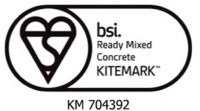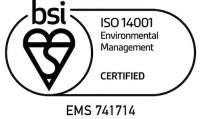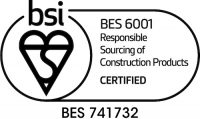What is a concrete admixture?
A concrete admixture is a substance that’s used to optimise a pre-existing concrete mix, conferring on it some additional benefits or properties to make it better suited to the project at hand.
They are typically added directly before or during the mixing process and there are dozens of different types out there.
Different types of admixtures
We will be covering some of the different types of admixtures and what they’re used for, so you can get a better idea of how they can take your concrete to the next level.
- Water reducing admixtures
- Superplasticisers
- Accelerating admixtures
- Shrinkage reducing admixtures
- Air entrainment admixtures
- Set retarding admixtures
Water reducing admixtures
Water reducing admixtures are designed to achieve a specific concrete strength using a much lower water-cement ratio than normal. One reason why you might want to use less cement in your concrete mix is because a lower cement content will result in lower CO2 emissions and an overall lower energy usage rate per batch of concrete produced.
Superplasticisers
Superplasticisers are primarily used to produce flowing concrete. Flowing concrete is a highly workable type of concrete that doesn’t sacrifice strength. It’s often used for thin section placements and areas with closely spaced reinforced steel.
Accelerating admixtures
Accelerating admixtures are used to speed up the rate at which concrete strengthens over time, or simply to reduce the time it takes for the concrete to fully set. The obvious application here would be if a project is running to a particularly tight schedule or if the weather was becoming increasingly volatile which could affect the site. The key component in most accelerating admixtures is calcium chloride.
Shrinkage reducing admixtures
Shrinkage reducing admixtures are fairly self-explanatory: they minimise shrinkage that occurs during the drying process. These sorts of admixtures are usually used for projects where shrinkage cracking could lead to structural problems down the line.
However, it’s worth keeping in mind that shrinkage reducing admixtures can occasionally reduce the strength development process during both the early and later stages of concrete curing.
Air entrainment admixtures
These sorts of admixtures are used to increase the freeze-thaw durability of concrete. As you can imagine, then, air entrained concrete is particularly desirable in areas where concrete is likely to experience a higher number of freeze-thaw cycles.
However, air entrained concrete does carry with it a couple of other benefits, including a high degree of workability and durability, so if you’re looking for a versatile concrete, this could be what you’re looking for!
Set retarding admixtures
You can think of set-retarding admixtures as the opposite of accelerating admixtures. They are used to actually delay the chemical reaction that causes the setting process to begin. One of the main reasons why you might want to delay this process is to offset the way in which higher outdoor temperatures can actually speed up the curing process. So if your project happens to fall during a particularly hot summer, set retarding admixtures might be something you need to look into.
We’re EasyMix Concrete – London’s favourite concrete supplier. No matter where you are in the capital, we can get you the exact type of concrete you need for your current project and ensure it’s delivered on time and with minimal hassle. For more information about our concrete and the different admixtures we can use to achieve the perfect mix, give us a call today.



